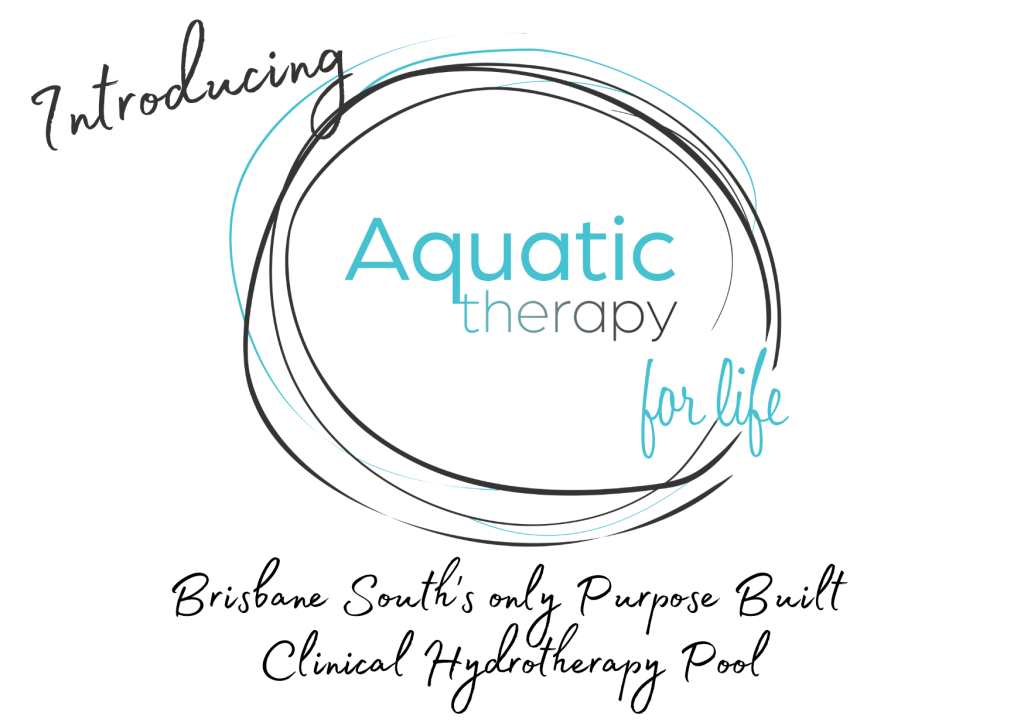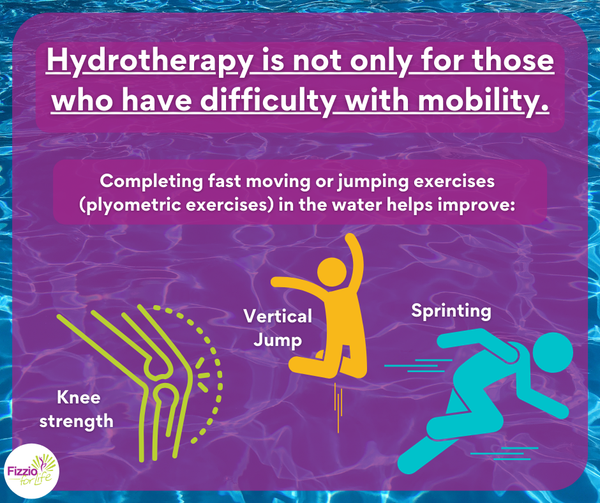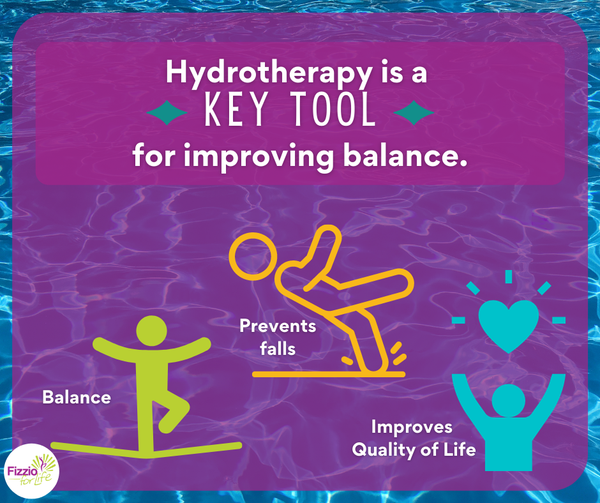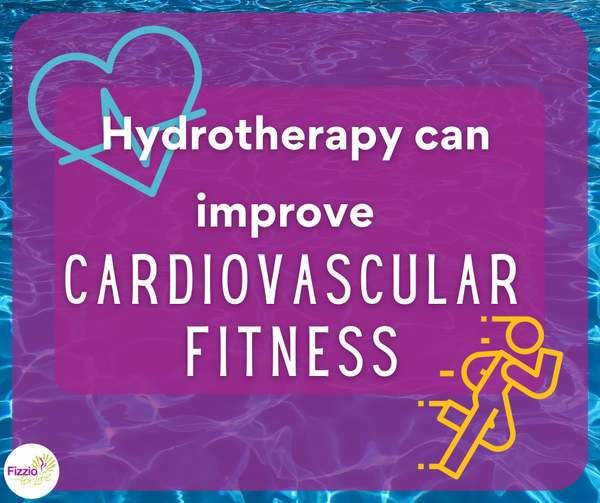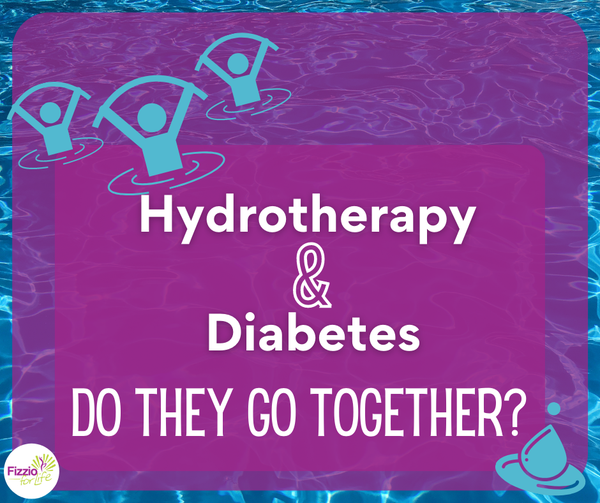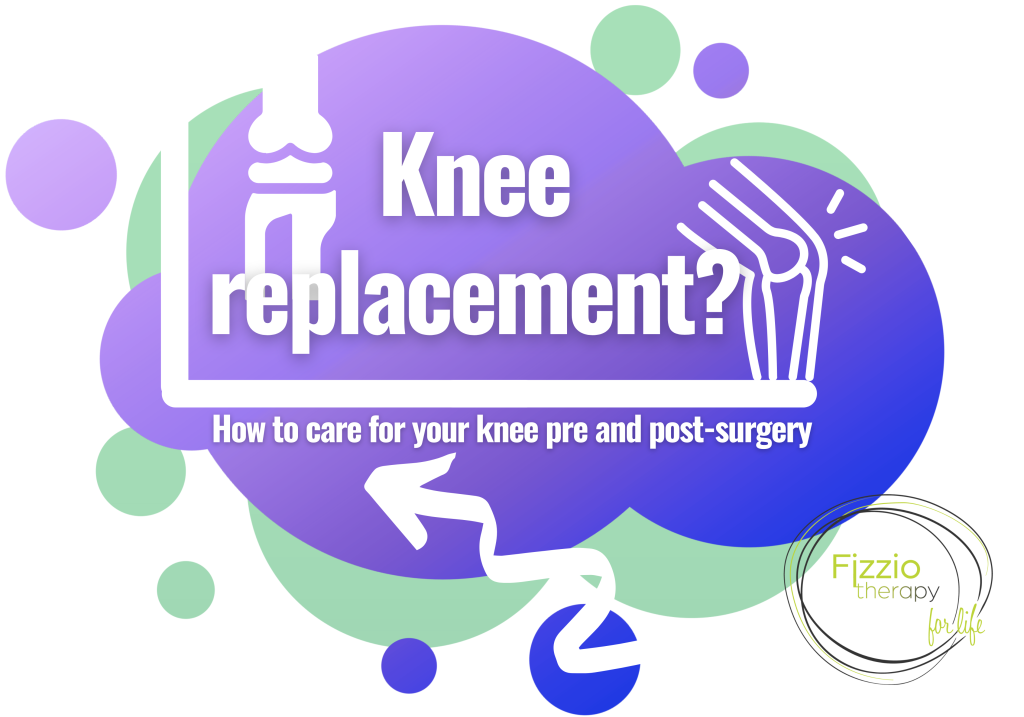
If you’re preparing for – or recovering from – a total knee replacement (TKR), exercise probably isn’t the first thing on your mind. But trust us, the right kind of movement is one of the most important tools in your recovery toolbox.
After a knee replacement, it’s normal to experience stiffness, swelling, and a reduced range of motion. That’s where exercise physiology comes in. We’re trained to create individualised, evidence-based programs to improve strength, mobility, and confidence – all while keeping your new knee safe.
Here’s a fun fact: research shows that people who participate in structured rehab after TKR improve their function and quality of life significantly more than those who don’t. Strengthening the muscles around the knee – particularly the quads, glutes, and calves – helps reduce joint stress and support smooth movement. And don’t worry, it’s not all squats and step-ups!
Enter hydrotherapy!
Hydro (aka exercising in warm water) can be a game changer after knee surgery. The buoyancy reduces joint load, making it easier to move without pain. At the same time, the water provides gentle resistance, helping to build strength and improve balance. Plus, it just feels good – especially on those days when gravity isn’t your friend.
Did you know? A 2020 study found that people who used hydrotherapy in their post-TKR rehab showed faster improvements in walking ability and reduced pain compared to those doing land-based rehab alone.
And it’s not just for after surgery. Pre-hab (exercising before your surgery) can also improve outcomes – people often recover faster and return to daily activities sooner.
So whether you’re planning your knee replacement or already working through recovery, tailored exercise will be your new best friend.
Need a hand getting started?
Get in touch with our team of experienced exercise physiologists and physios. We’ll guide you every step of the way – in the pool, clinic, and gym, we’ll get you back doing what you love.
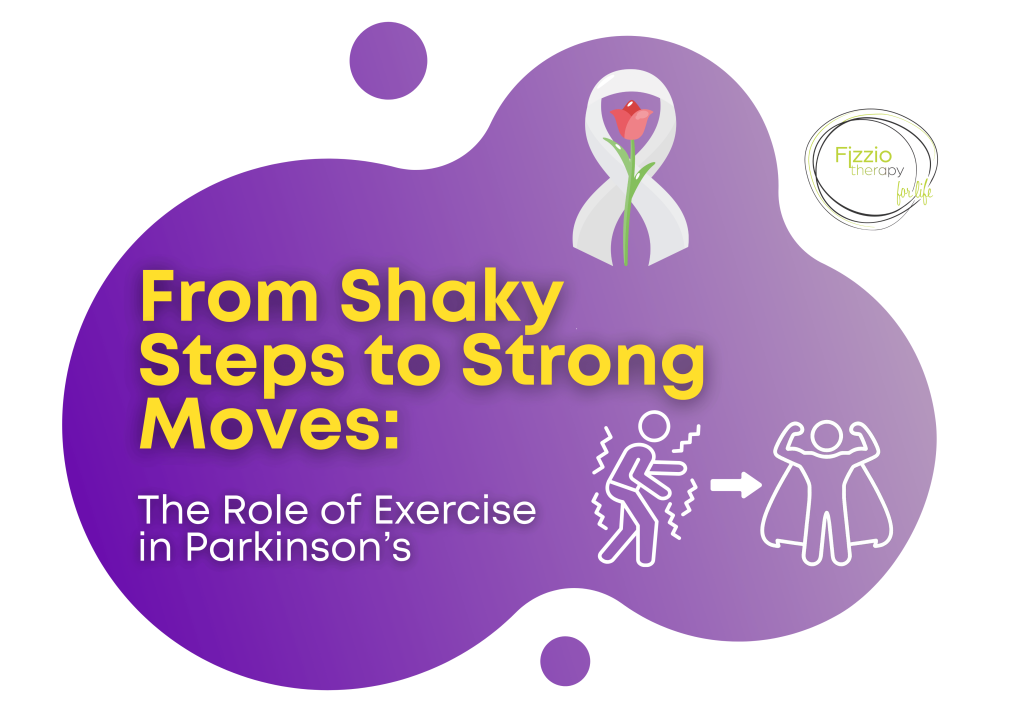
Let’s talk about something that affects over 150,000 Australians – Parkinson’s disease. And here’s a stat that might surprise you: around 50 new cases are diagnosed every single day.
Now, when we think about Parkinson’s, most of us picture older adults. But did you know that 10 to 20% of people diagnosed are actually between the ages of 20 and 50? This is known as Young Onset Parkinson’s Disease, and it often comes with a unique set of challenges—especially when it hits during the prime of life.
More Than Just a Tremor
Parkinson’s isn’t just about shaky hands or slowed movements. It’s a complex neurological condition that can affect both physical and cognitive function.
Here’s what that can look like:
Physically:
- Tremors
Changes in walking or gait
Balance issues - Mobility challenges
- Autonomic dysfunction (things like dizziness, digestive issues, or difficulty regulating body temperature)
Cognitively:
- Memory loss or poor concentration
- Sleep disturbances
- Anxiety, depression, or apathy
These symptoms can start early and can significantly impact a person’s independence and quality of life. But here’s where things get really encouraging…
Exercise is Powerful Medicine
Research shows that movement is one of the most effective tools we have for managing Parkinson’s symptoms—both physical and mental. Exercise increases blood flow to the brain, reduces inflammation, releases feel-good chemicals like dopamine and serotonin, and supports the creation of new neural pathways.
That’s right—your brain can rewire itself with consistent movement.
Whether it’s walking, dancing, yoga, swimming, circuit training, or strength work, studies suggest that regular exercise can improve overall function by up to 55%. That’s no small thing.
The Benefits of Exercise for Parkinson’s Include:
– Improved motor function – better balance, walking, and strength
– Reduced non-motor symptoms – such as better sleep and mood stability
– Slower cognitive decline – including improved memory, attention, and focus
– Better emotional wellbeing – including reduced depression and anxiety
In fact, one study found that people who did a combo of aerobic and resistance training saw a significant drop in depression—and the benefits lasted for up to six months even after they stopped training. That’s a huge win.
Why Work with an Exercise Physiologist?
Every person with Parkinson’s is different—and that’s where we come in.
At Fizzio For Life, our Exercise Physiologists are trained to tailor programs specifically to your needs. Whether you’re newly diagnosed or have been living with Parkinson’s for years, we create safe, evidence-based movement plans that help you move better, feel stronger, and live more confidently.
Starting Point: Try Hydrotherapy
If you’re not sure where to begin, hydrotherapy is a fantastic starting point. Our heated hydrotherapy pool creates a low-impact environment perfect for combining aerobic and resistance exercise. The warm water reduces strain on your joints, improves circulation, and lowers the risk of falls—making it easier to move, stretch, and build strength in comfort.
You’re Not Alone – We’re Here to Help
Whether you’re living with Parkinson’s or supporting someone who is, you don’t have to figure it out alone. We’re here to walk (and move!) with you, every step of the way.
Let’s improve movement, boost mood, and build strength together—one session at a time.
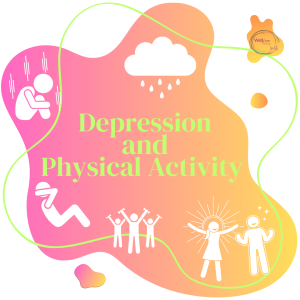
Depression is a prevalent mental health condition affecting millions worldwide. Characterised by persistent sadness, lack of interest or pleasure, and various physical symptoms, depression can severely impact one’s quality of life. While traditional treatments like medication and therapy are effective, incorporating exercise into your routine can be a powerful complementary approach. Here’s why exercise is a crucial component in managing depression and how you can get started.
Why Exercise Matters
Exercise offers multiple benefits for those dealing with depression:
- Mood Enhancement: Physical activity increases the production of endorphins, often referred to as “feel-good” hormones. These chemicals interact with brain receptors, reducing the perception of pain and triggering a positive feeling in the body, similar to that of morphine.
- Reduced Symptoms: Regular physical activity can decrease symptoms of depression. Studies show that even low levels of exercise, such as 30 minutes of walking per day, can significantly reduce depressive symptoms.
- Improved Sleep: Depression often comes with sleep disturbances. Exercise helps regulate sleep patterns, allowing for more restful and restorative sleep.
- Boosted Self-Esteem: Achieving fitness goals, no matter how small, can enhance your self-esteem and provide a sense of accomplishment.
- Social Interaction: Group exercise activities can reduce feelings of isolation and loneliness by providing a social network of support.
Getting Started with Exercise
Here are some tips to incorporate exercise into your routine:
- Start Small: Begin with short, manageable sessions of 10-15 minutes and gradually increase the duration as you build stamina and confidence.
- Find What You Enjoy: Whether it’s walking, cycling, swimming, or yoga, choose activities that you find enjoyable. The key is consistency, and you’re more likely to stick with something you love.
- Set Realistic Goals: Setting achievable goals can keep you motivated. Celebrate your progress, no matter how small.
- Incorporate Variety: Mixing different types of exercise can prevent boredom and work different muscle groups, providing a balanced fitness routine.
- Seek Support: Join a class or find a workout buddy. Social interaction can enhance the benefits of exercise and keep you accountable.
- Consult Professionals: If you’re unsure where to start or have specific health concerns, consult an Accredited Exercise Physiologist who can tailor a program to your needs.
How an Exercise Physiologist Can Help
Exercise Physiologists are more than just fitness professionals; they are specialised in creating comprehensive plans to support both physical and mental health. Using evidence-based information from the latest research, they ensure that your exercise prescriptions and strategies are effective and up-to-date. Here’s how they can assist you:
- Personalised Exercise Programs: Tailored to your specific needs and goals, these programs ensure you’re doing the right exercises at the right intensity.
- Motivational Strategies: They can help you set realistic goals and provide ongoing support to keep you motivated.
- Mindful Practices: Incorporating mindfulness techniques such as breathing exercises can enhance the mental health benefits of physical activity.
- Behavioural Strategies: Techniques to improve compliance and integrate exercise into your daily routine, making it a sustainable part of your lifestyle.
- Holistic Approach: Considering all aspects of your health, including physical, mental, and emotional wellbeing.
Ready to take the first step towards a healthier, happier you?
Contact us today to learn more about how exercise can be an integral part of your mental health management plan. Let’s work together to create a routine that fits your lifestyle and helps you thrive.
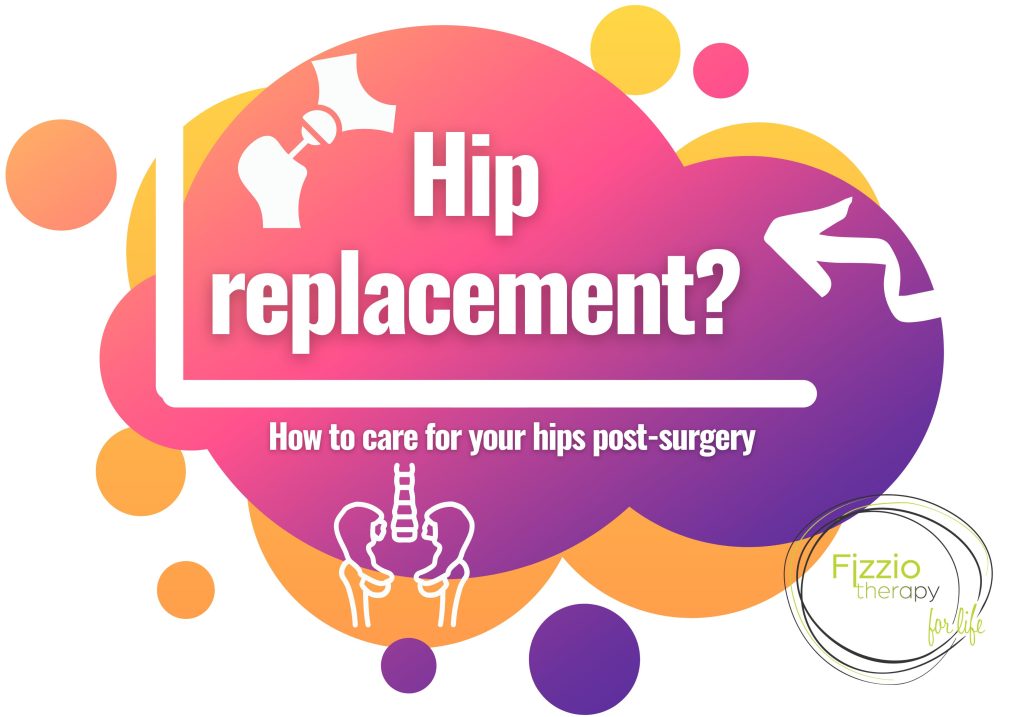
Whether you are just exploring treatment options, have decided to go ahead with the surgery, or have already had a hip replacement, the following information will help you through your recovery journey.
Although there are average guidelines regarding recovery time, recovery will look different for every hip replacement. Factors such as age, pre-habilitation/strength, general health and well-being can impact the recovery journey—there’s no point in comparing how others are going; it’s your hip, and your goals are most important to you.
It is vital that you take an active role in your recovery journey, working together with your doctors and allied health practitioners to plan and prepare for successful recovery.
Average recovery time
First week – post operative
Don’t be surprised if a physiotherapist comes in to help you get out of bed as early as the day of the operation. Physiotherapists will show you ways to get in and out of bed safely and mobilise when safe – usually with a gait aid.
Exercises in the hospital—Depending on your progress, the physiotherapist will prescribe a couple of exercises, ensuring you do them safely and according to the prescription. Having pain relief/medication before Physiotherapy sessions will help you participate better.
When it is safe to go home, you will likely be discharged within a few days, i.e., when you can get around confidently and safely with a walking aid, are mostly independent (not everyone has to be independent to be discharged from the hospital), have organised relevant equipment at home, and have no other complications.
Exercises after the hospital: Your physiotherapist will continue to work with you and progress your exercise program to improve your strength and balance. Ensure swelling and pain are well controlled. It is harder to see swelling in the hip than in the knee, however, swelling can last up to 3-6 months.
Can I move normally after hip surgery?
When getting your hip done, you may have heard from your surgeon and the physiotherapist what movements to avoid with your hips. It’s called a hip precaution, a well-known post-operative protocol designed to mitigate hip dislocations that can occur at an estimated incidence of 1-3%.
There are a few different surgical approaches to hip replacement, i.e., going through the muscles of the buttock (Posterolateral), going from the front (Direct anterior), or going slightly off to the side a bit from the front (Anterolateral). Hip precautions depend on the surgeon and what approach they have used. Depending on the hospital, your doctor, nurse, or physiotherapist will go through this with you before and after the surgery unless you are in for an emergency hip replacement.
The most common approach for hip replacement is the posterior approach – provocative positions for this approach include bending the hips, bringing legs across the body’s midline or twisting the leg inwards. Precautions include:
– Do not bend the hip more than 90 degrees (you may need pieces of equipment at home)
– Do not cross your legs or feet
– Do not roll or lie on your unoperated side for the first six weeks ( this will make the operated leg cross the midline)
– Do not twist the upper body when standing
– Sleep on the back for the first six weeks
– Avoid bathing (you can still shower) and bending down to the tub for 8-12 weeks
(More information available from National Library of Medicine ‘Hip Precautions’)
Ultimately, the surgeon who performed your hip surgery will decide the hip precautions and what you can or are limited to. The nurses and physiotherapists will check the post-operation orders to ensure you comply with the protocol and minimise the risk of dislocation.
Reaching 6-week mark
You might have gotten rid of the gait aid by six weeks as it feels less painful. However, if you are limping without the aid, you need to practice walking correctly with it. Once you can walk normally with an aid, then you can move on to practice without it. By six weeks, your hip movements would have improved, and you would have started to perform light activities such as preparing meals and other daily tasks. It will have become easier to take care of the hip and able to go up and down stairs. If you have taken a leave from work for the surgery, please seek advice from your treating doctor before returning to work.
Congratulations, you made it to the 3rd month!
You should be able to feel that swelling has gone down significantly by now. If you have access to a gym, you might have started using stationary bikes or light weights. If you need help determining which exercises to do and when, please consult the physiotherapist treating you. You will need clearance to drive from your treating doctorIf you have a sport to return to or want to start a new sport, please consult the treating doctor and your physiotherapist.
Remember that you have a brand new hip in there, and it can take up to 12 months for a full recovery. If you have any questions, or would like to know any further information please reach out to us below, or on 38053223.
Like to know more information?
Reference List
https://www.svph.org.au/services/orthopaedics/knowledge-hub/hip-replacement-surgery-your-recovery
https://orthoinfo.aaos.org/en/treatment/total-hip-replacement/
https://www.healthdirect.gov.au/hip-replacement#:~:text=During%20hip%20replacement%20surgery%2C%20damaged,takes%201%20to%202%20hours.
https://www.ncbi.nlm.nih.gov/books/NBK537031/
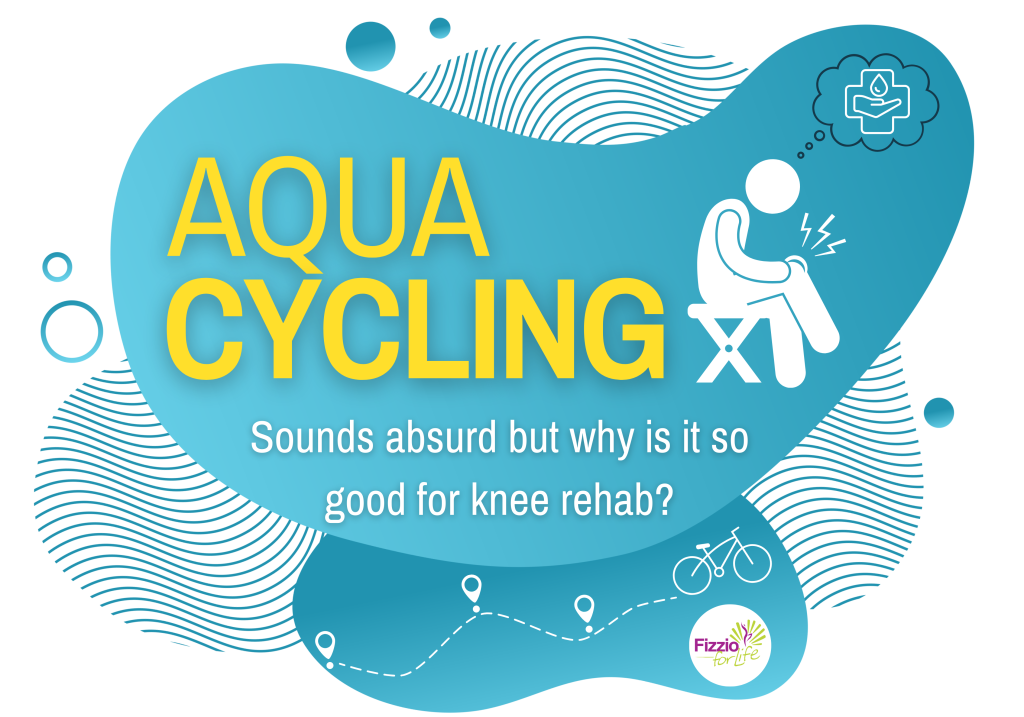
Riding a Bike in the Water?? Sounds absurd but why is it so good for knee rehab?
Knee rehabilitation is a common concern for individuals who have undergone knee surgery or experienced knee injuries. Exercise is a crucial component of rehabilitation, but traditional forms of exercise can be painful and difficult for those with knee injuries. Underwater biking, also known as aqua cycling, is an excellent option for individuals with knee injuries as it provides a low-impact workout with numerous benefits. In this blog, we’ll explore the benefits of using an underwater bike for exercise during knee rehabilitation.
Low-Impact Exercise
The buoyancy of water provides a low-impact environment, reducing the stress on the knees while exercising. This is particularly important for individuals with knee injuries or arthritis, as it helps prevent further damage and pain. Aqua Cycling also provides resistance to movement, making it an effective form of cardiovascular exercise without putting undue stress on the knees.
Improved Range of Motion
Underwater biking promotes better range of motion in the knees, which is essential during rehabilitation. The water resistance against the pedaling motion can help strengthen the muscles around the knee and individuals with limited knee mobility can use aqua cycling to increase their range of motion while minimizing discomfort.
Reduced Swelling
Water pressure from the surrounding water can help reduce swelling in the knee. Swelling is a common issue after knee surgery or injury, and reducing it can promote better healing and reduce pain. Aqua cycling can be a useful tool to help reduce swelling in the knee while providing exercise benefits.
Improved Cardiovascular Health
Underwater biking is a form of cardiovascular exercise that can provide numerous benefits for overall heart health. The combination of pedaling and water resistance can help increase heart rate, improve circulation, and promote better cardiovascular health. This is particularly important for individuals with knee injuries who may have limited options for cardiovascular exercise.
Customizable Resistance
The resistance of an underwater bike is completely dependent on how hard you push! The faster the movement, the harder the resistance of the water. So the resistance can be gradually increased over time as strength improves.
So why not give it a go?
Aqua cycling is an excellent exercise option for individuals with knee injuries, offering low-impact exercise with numerous benefits. It can help improve range of motion, reduce swelling, promote cardiovascular health, and provide resistance to improve strength. With the guidance from a physiotherapist or exercise physiologist, a rehabilitation program can be designed to get you back on your feet.
Introducing our unique hydrotherapy pool
Public pools, a lot like commercial gyms, can be daunting and off putting for a lot of people. Having your own space to complete your therapy will make it easier than ever to get engaged in hydrotherapy.
That is why we are really excited that our purpose built hydrotherapy pool is almost complete! This pool is one of only three private hydrotherapy pools in Brisbane and the only one on the southside of Brisbane. Not only that, it is uniquely designed by our experienced therapists to provide optimum results for rehab and the treatment of disabilities. There is no other pool like it in Australia.
What’s so unique about it?
This is not your typical lap pool for recreational ‘swimming’ or swimming lessons. This is specifically designed for hydrotherapy and completing aquatic therapy under the supervision of Allied Health therapists. This means the purpose built pool has been designed with YOU and your rehabilitation in mind.
Some of the unique points include:
- Rehab specific – 6 separate rehabilitation areas over 4 separate depths
Our pool has 4 different depths enabling us to work in clearly defined areas for different purposes, from 0.9m to a water running area at 1.6m. It has a permanent seated platform, full height stair station, and a step up area with two heights, so we can facilitate aquatic therapy for every type of injury or disability. - Privacy
Our pool is a private space, designed for small groups and individual therapies. There is no public access. All patients at the pool will be involved in rehabilitation resulting in a level of dignity and respect for our patients that is not accessible in public spaces. Exclusive therapy times may be arranged for select groups due to religious, cultural or personal reasons. Best of all, therapy will be available by appointment all day – no blocked out times for swimming lessons! - Sensory adaptation
Unlike any other aquatic facility, our pool has the capacity to provide either a quiet space or an engaging space: Lighting off, calming video projection and soft or no music to calm over-activity, or multi-coloured lights in the pool, disco lighting/galaxy lights, and music for stimulation. We are excited to be able to create specific programs like this, designed with the help of a paediatric physiotherapist, and will be the only facility to do so in Australia. - Modern disability and rehabilitation equipment
A hoist sling and platform will make this pool more accessible than most private and public pools. No matter your ability you’ll be able to access the pool to complete your hydrotherapy in the way that suits you best. Water wheelchairs are also available, along with an underwater treadmill and bike for specific therapy needs such as post knee and hip replacement rehab, sports rehabilitation and many other uses. Plinths and seats that attach to rails will also be available for those with limited mobility. - Magnesium-based, 33.5 degree water
Unlike the harsh water in public pools, our pool is magnesium-based which means less irritation and odour from harsh chemicals. Set at an optimum temperature for hydrotherapy, a warm 33.5-34.5 degrees, and clean and modern setting, your therapy will be beneficial and comfortable all year round. - Cost effective
Therapy plans under the NDIS and Aged Care are always being scrutinised for cost-effectiveness. Being a participant at our pool will save you money on your plan as our providers don’t need to travel. This means more funding for you to spend on your therapy! Funding support may be available under your Private Health Fund, Medicare (with a Team Care Arrangement from your GP), Workcover, My Aged Care Packages, Third party insurance.
As there is no pool like this in Brisbane, we anticipate that spots will fill fast, so book now!
Call the Fizzio for Life office to enquire on 38053223 or use the contact form below.
We are so proud of this facility and really look forward to sharing it’s unique properties with our community!
Hydrotherapy is not only for those who have difficulty with mobility.
Hydrotherapy (or water based exercise) is a fantastic tool to help improve power and function. We all need power as an aspect of our strength, whether it is getting out of a chair, running down the street after the dog, or playing some social netball. Moving at a faster pace with force can be easily and repeatedly done in the pool due to the buoyancy from the water therefore reducing the load felt through the joints.
In short, completing fast moving or jumping exercises (plyometric exercises) in the water helps improve strength, jumping, and sprinting performance on land.
Hydrotherapy is a key tool for improving balance.
Hydrotherapy serves to help improve balance in older populations and also specifically in conditions that negatively impact your balance such as Parkinson’s disease, peripheral neuropathy (lack of feeling in your feet and lower limbs), stroke or brain injury or even a knee or hip replacement or injury.
The great thing about practicing your balance in the water is that you have a soft place to land!! This does reduce the fear of falling and therefore you are more likely to try more challenging exercises. The water does provide support to hold you upright and also the water moving against your body can add an additional challenge.
Recent reviews of the research has shown that practicing balance exercises in the water is more beneficial than on land ultimately reducing the risk of falling and therefore also reducing risk of injury and improving ability to complete further physical activity. All of this means an improvement to overall health!
Interested in getting started in the pool? We would be more than happy to help you get started. Get in touch to make this happen.
Hydrotherapy can improve cardiovascular fitness.
Those who have suffered a stroke know all too well how hard it can be to complete everyday tasks – it just takes more energy to do somewhat simple things. This in turn means that often cardiovascular fitness is lower than average in this group of people. This makes being active for longer even harder. Plus there is also the ongoing health risks associated with low cardiovascular fitness including heart disease, diabetes and secondary stroke.
Exercising in the water (Hydrotherapy) allows more support in holding yourself up meaning that movements and exercises that are harder on land or a higher intensity of movement can be reached for longer periods of time.
Recent research articles found that compared to land-based exercise, hydrotherapy was more effective in improving cardiovascular fitness after stroke. This is good news!
If you would like to learn where to start for yourself or someone you care about, our exercise physiologists are the people with the know-how.
Hydrotherapy and diabetes – do they go together?
Approximately 1 million Australians have Type 2 Diabetes and nearly ¾ of them don’t meet the guidelines for exercise that ultimately help maintain the condition.
WAIT WHAT?
We know that exercise helps to manage the sugar in the blood and reduce the rate of onset of symptoms like peripheral neuropathy (reduced nerve activation in the legs causing no feeling), and lowers the increased risk of heart conditions and stroke and decreases the risk of death from diabetes and PEOPLE AREN’T EXERCISING? Why?
Arthritis is a common ailment that can go alongside diabetes – this can cause discomfort during exercise and so maybe avoiding the pain means no exercise is completed.
Maybe the diagnosis is a lot and not being sure what exercise will help makes it hard to get started.
Research has confirmed that Hydrotherapy can be a great way to exercise to increase fitness and strength in those with Type 2 Diabetes. The water reduces the load on joints to moving is so much easier and often much less painful. This allows for strength training to be completed and the heart rate to increase safely with cardiovascular exercise – not only swimming laps, but walking in the water and cycling in the water.
This is great news as glycaemic control (how much your sugar level moves around) is improved and decreases risk of developing cardiovascular disease.
Exercising in the water could be a great option for you. Let us help you get moving in the water.

Heart disease or cardiovascular disease (CVD) is a term that includes conditions that affect the heart and blood vessels such as coronary heart disease, heart failure, arrhythmias, angina, and others.
Heart disease affects more than 4 million Australians with approximately 26% of all deaths and 11% of all hospitalisation attributed to heart disease within Australia.
Heart disease kills 40% more men than women each year with men more frequently admitted to hospital with heart disease each year and men twice as likely to have a heart attack than women. When thinking of heart disease and heart health some of the symptoms include:
- Sense of discomfort in chest lasting more than 30 minutes
- Unexplained pain in chest, neck and jaw
- Irregular heartbeat
- Dizziness or fainting
Men are often known to neglect their health either by thinking it won’t happen to them or ignoring symptoms with a ‘she’ll be right’ attitude. Men are known to put off going to the doctor or health professional when they do have signs and symptoms when a visit could set them on the road to better health. It’s important for men to keep in mind when it comes to heart health and their overall health that it’s not just for themselves but their family that is impacted as well.
Risk Factors for Heart Disease
- High Blood Pressure
- High Cholesterol
- Diabetes
- Smoking
- Obesity
- Depression
- Physical Inactivity
Exercise is great for the heart as the heart, like any muscle, can benefit from exercise and improve in function. This plays a positive role in the prevention of CVD as well as to rehabilitate after a cardiac incident. When the heart becomes stronger it becomes slower which often reduces blood pressure. Some of the other side effects of exercise apart from cardiovascular benefits are improvements in physiological health as well as bodies ability to process cholesterol and blood sugar all of which contribute to reducing the risk factors for developing heart disease.

Teaming up kids with water can help them meet their land-based goals while having loads of fun.
Children with a disability, recovering from cancer, injury, pain, hypermobility, autism to name a few, all benefit from exercise in the water.
Teaming up kids with the right therapist and with water can help them to reach their land based goals. Sometimes, children can walk in the water before they walk on land! The water supports their body, decreases the weight that they are trying to move around and their fear of falling reduces!
Conditions hydrotherapy can help:
- Developmental delays
- Autism
- Cerebral palsy
- Acquired brain injuries
- Pain conditions
- Downs Syndrome
- Post-surgical or post plaster recovery
- Hypermobility and Ehlers Danlos Disorders
- Post cancer treatment
Older children with neurological conditions and/or hypermobile joints can do more in the water to strengthen the ligaments and musculature stabilising the joints that aren’t so stable on the land.
Joint range of motion can be maintained and maximised in the water using floatation devices to get the most movement out of the joints. The water also resists movement and with the use of lots of fun equipment, the resistance can be increased and progressed resulting in improvements in upper and lower body as well as core strength and stability. Of course there is always time in the sessions for some splashing fun as well!
The list of benefits goes on …
For children with sensory processing disorders, the sensory nature and pressure of the water may dampen over-stimulation and have a calming effect. Research has shown improvements in social interactions and behaviours of those with Autism Spectrum Disorder (ASD).
Exercise in the water can also help with weight management, improve sleep and decrease anxiety. All great things for any person, but particularly beneficial for children who are enjoying the exercise because it is in a fun environment.
We understand that swimming isn’t for everyone and just like adults, children don’t always like putting their eyes and ears in the water. There are always adaptations that can be made like completing exercises while floating vertically or keeping their feet on the ground. We will always work with what feels comfortable first and then push forward slowly towards reaching goals. Ensuring actual safety as well as the feeling of safety is of paramount importance.
The first assessment session will occur out of the pool with the child and their parent or carer. This gives time for the gathering of health information but also allows a positive connection with the child and clinician to occur, gaining trust and cooperation ready for the first session at the pool.
If you think hydrotherapy sessions for your child may help them, give us a call to talk it through with our reception staff and arrange an assessment to get started in the pool.


